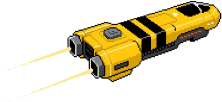Explore >> Select a destination

|
You are here |
aradaelli.com | ||
| | | | |
thatonegamedev.com
|
|
| | | | | Dive into the world of C generics, exploring how to write flexible, type-safe code without the pitfalls of traditional macro-based solutions. Learn about modern techniques to achieve generic programming in C. | |
| | | | |
github.com
|
|
| | | | | Are We Fast Yet? Comparing Language Implementations with Objects, Closures, and Arrays - smarr/are-we-fast-yet | |
| | | | |
alexandrnikitin.github.io
|
|
| | | | | Hoisting is a compiler optimization that moves loop-invariant code out of the loop. The post reveals hoisting in .NET and explains what code will be optimized and why. | |
| | | | |
www.alexedwards.net
|
|
| | | |||




